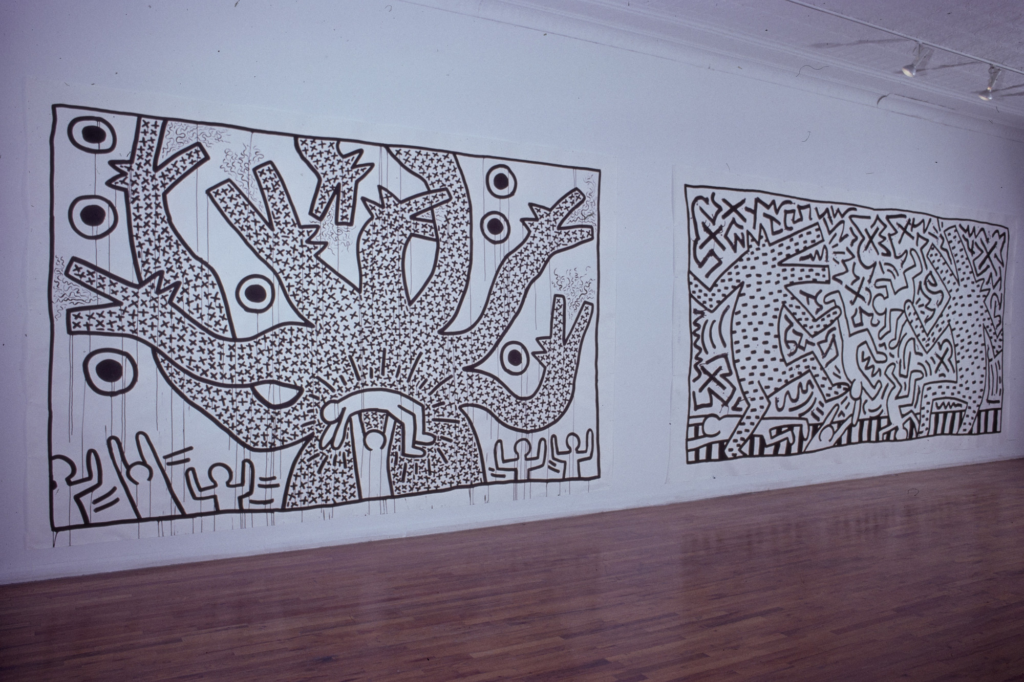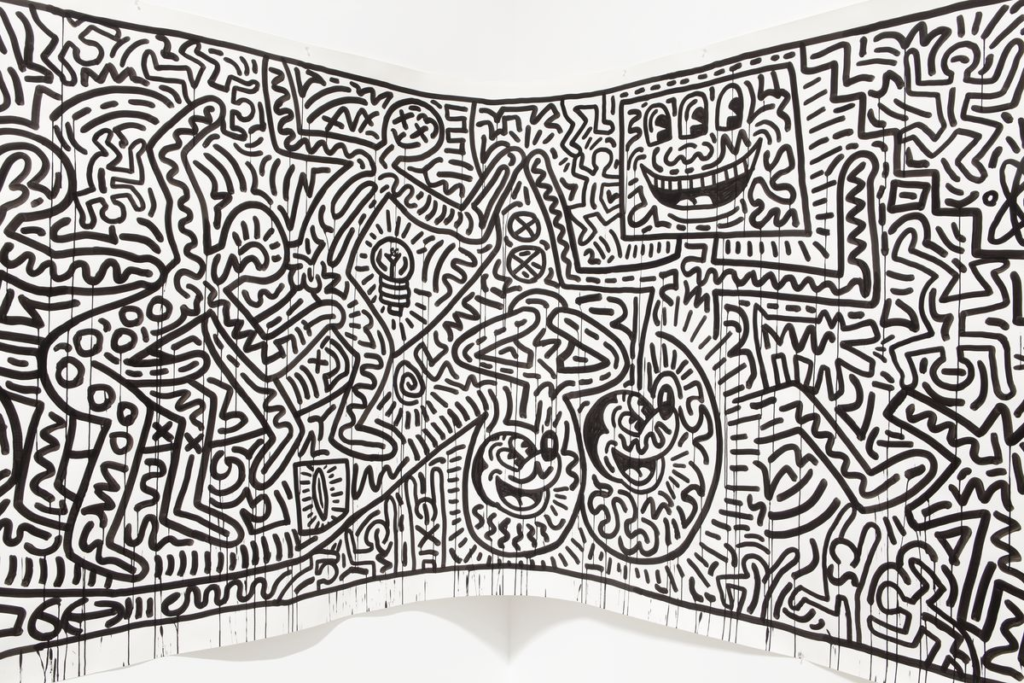Memoriesforart » Artists » Keith Haring
More Facts
Name: Keith
Surname: Haring
Gender: Male
Lives & Works: Reading
Lives in State: Pennsylvania
Nationality: United States of America
Date of Birth: 1958
Date of Death: 1990
Period: Post-War
Movement: Contemporary art, Pop art
Table of Contents

The renowned American artist Keith Haring had an interesting early life and education that greatly influenced his artistic style and career. Haring was born in 1958 in Reading, Pennsylvania. From a young age, he showed a passion for drawing and art. His parents recognized his talent and encouraged his artistic pursuits.
During high school, Haring’s interest in art grew even more vital. He took art classes and participated in various school activities related to art. After graduating high school, Haring enrolled at the Ivy School of Professional Art in Pittsburgh. However, he soon realized that the traditional art education offered at the school needed to align with his artistic vision and goals.
In 1978, Haring boldly moved to New York City to study at the School of Visual Arts (SVA). This decision proved to be pivotal in his artistic development. At SVA, Haring flourished and found inspiration in the vibrant and diverse art scene of New York City during the late 1970s and early 1980s. He was mainly influenced by street art, graffiti, and the emerging hip-hop culture.
Haring’s time at SVA allowed him to explore various mediums and techniques. He experimented with drawing, painting, printmaking, and sculpture. His distinctive style, characterized by bold lines, vibrant colors, and simple yet powerful imagery, took shape during this period.
Haring passed away at a young age due to complications from AIDS.

Keith Haring was a renowned artist known for his unique style and iconic imagery. He rose to prominence in the 1980s New York City art scene and became known for his bold, colorful, and energetic drawings.
Haring’s artwork often featured simplified figures, such as dancing, barking dogs, and crawling babies, which became his signature symbols. He believed art should be accessible to everyone and used public spaces, such as subways and walls, as his canvas.
Haring’s work addressed various social and political issues, including AIDS awareness, racism, and capitalism. His art was visually striking and carried messages of activism and social change.

The street culture of New York City profoundly influenced sharing. He became actively involved in the underground art scene, creating spontaneous and public artworks in subway stations and on empty advertising billboards. These public interventions became integral to his artistic practice and helped him gain recognition and a dedicated following.
Keith Haring believed that color could convey emotions and communicate messages to viewers. Haring used bold, bright colors in his paintings, drawings, and murals to create visually striking images that captivate and engage his audience.
He often used contrasting colors and strong color combinations to create a sense of energy and movement in his work. Haring’s use of color added depth and intensity to his art, making it instantly recognizable and memorable.
Keith Haring incorporated symbols into his artwork to convey meaning and communicate his messages. Haring believed that signs had the power to transcend language barriers and reach a broad audience.
He used simple, iconic symbols such as hearts and dancing figures to represent universal themes such as love, unity, and human connection. These symbols allowed Haring to convey complex ideas in a concise and accessible way.
By using symbols, Haring created visually appealing and intellectually stimulating art, making his work relatable to people from all walks of life.

Painting
|
Ignorance = Fear |
1989 |
|
Unfinished painting | |
|
Radiant Baby (from the Icons series) |
1990 |
|
Keith Haring |
1982 |
|
Tuttomondo |
1989 |
|
Andy Mouse |
1986 |
|
Crack Is Wack |
1986 |
|
Untitled |
1987 |
|
Pop Shop 1 |
1987 |
|
Free South Africa |
1985 |
|
Keith Haring Mural |
1984 |
|
We the Youth |
1987 |
|
Fight Aids Worldwide |
1990 |
|
The Boxers (sculpture) |
1987 |
|
Self Portrait |
1986 |
Keith Haring, a renowned artist known for his bold and vibrant graffiti-inspired artwork, was inspired by various factors throughout his life. One of the significant influences on his artistic style and subject matter was the urban environment of New York City in the 1980s. Haring was captivated by the energy and vitality of the city streets, and he found inspiration in the graffiti and street art that adorned the walls and subway stations.
Another primary source of inspiration for Haring was his desire to create art that was accessible to everyone. He believed that art should be for the people, not just for the elite few, and he wanted his work to reach a broad audience.
This belief led him to create public art pieces visible to all, such as his iconic murals and sculptures. Haring’s art was often characterized by simple, recognizable symbols and figures, which made it easily understandable and relatable to people from all walks of life.
Additionally, Haring was inspired by his passion for social justice and activism. His artwork often addressed important social and political issues, such as AIDS awareness, apartheid, and nuclear disarmament. Haring used his art to raise awareness and promote positive change in society.
Keith Haring’s legacy has significantly impacted the art world and beyond. As a prominent figure in the New York City art scene in the 1980s, Haring’s work was characterized by its bold and colorful style, often featuring iconic figures and symbols.
His art was visually striking and carried powerful messages about social and political issues, including AIDS awareness, drug addiction, and the fight against racism.
One of Haring’s significant contributions was his ability to bring art to the public. He believed that art should be accessible to everyone, not just those who could afford to visit galleries or museums.
To achieve this, he created numerous public artworks, including murals, sculptures, and even subway drawings. By doing so, he brought art out of the traditional confines and into the streets, making it a part of everyday life for many people.
Haring’s influence extended far beyond the art world. His work was often seen as a reflection of the times, capturing the spirit of New York City in the 1980s. His vibrant colors and simple yet powerful imagery resonated with a broad audience and continue to inspire artists today.
Additionally, Haring’s commitment to activism and his use of art as a tool for social change paved the way for future artists to use their platform to address critical issues.